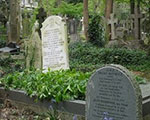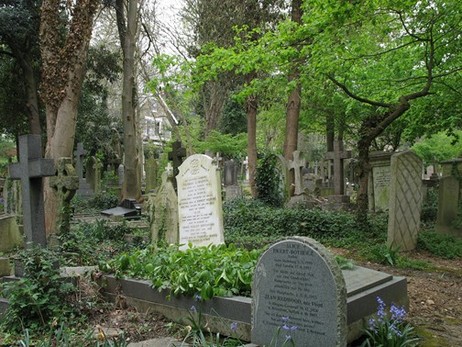19th-Century Contests for Ideas to Prevent Premature Burial
Published Jul-06-15Breakthrough:
A run of competitions during the 19th century elicit both ludicrous and practical ideas for tests to determine death.
Company:
Various, France
The Story:
 During the 18th and 19th centuries, many people were scared to death of being buried alive, namely by being pronounced dead and put six feet under when they were actually in a coma. So widespread were these concerns that hospitals for the dead were created where cadavers were kept under observation less they woke up. Death was confirmed once the bodies started to go off.
During the 18th and 19th centuries, many people were scared to death of being buried alive, namely by being pronounced dead and put six feet under when they were actually in a coma. So widespread were these concerns that hospitals for the dead were created where cadavers were kept under observation less they woke up. Death was confirmed once the bodies started to go off. George Washington was one of the many caught up in the hysterical mood of the times and insisted that when he died, his body should be kept on ice for a few days before burial.
The ‘Dead’ Awaken
In one mortuary house in Germany, the fingers and toes of corpses were attached by pieces of string to a large harmonium with air-pressured bellows. Someone waking up from a coma would therefore trigger a loud noise. The trouble with this approach was that the swelling of bodies also set off the mechanism.
The public fears of premature burial were fuelled by sensational reports and the fact that many of the tests to distinguish between the living and the dead didn’t work
To pacify nervous populations and to find a definitive way of determining death, a number of contests were held in the first half of the 19th century. Among them was the Prix Manni contest of 1937, in which the toxicologist Pietro Manni donated 1,500 gold francs to the Academy of Sciences in France for anyone who could come with a conclusive approach.
Signs of Death
The contest’s first two iterations yielded no significant solutions. An 1848 version looked likely to follow the same path, yielding a number of far-fetched suggestions. They included:
• Shouting in someone’s ear
• Placing a crawling object in an ear
• Sticking a flag into the heart of the deceased to see if it waves
• Tickling the deceased person’s nose with a feather
However, this time there was a clear winner with a very simple idea, and one that to our modern minds demonstrates the most common sense. Eugene Bouchut won for his suggestion that a stethoscope could be used to listen to a person’s heartbeat. If after two minutes of listening no beat was detected, death could be declared. The medical instrument had been invented by René Laennec thirty two years previously and used to diagnose lung and heart disease.
There were further competitions after this one. In 1868, Professor M. Weber, a forensic specialist from Leipzig won the Prix d'Ourches for his suggestion of rubbing brushes over a corpse's body. This should be done for several hours as according to Professor Weber the skin would take on a parchment-like texture. However, the prize commissioners were unable to replicate his method and so he was awarded a 5,000-franc honorable mention instead of the full 20,000-franc grand prize.
Innovation Catalysts
The competitions are a fascinating piece of medical history, an intriguing example of how diverse brains were enlisted to try and find innovative solutions.
Next Story »

